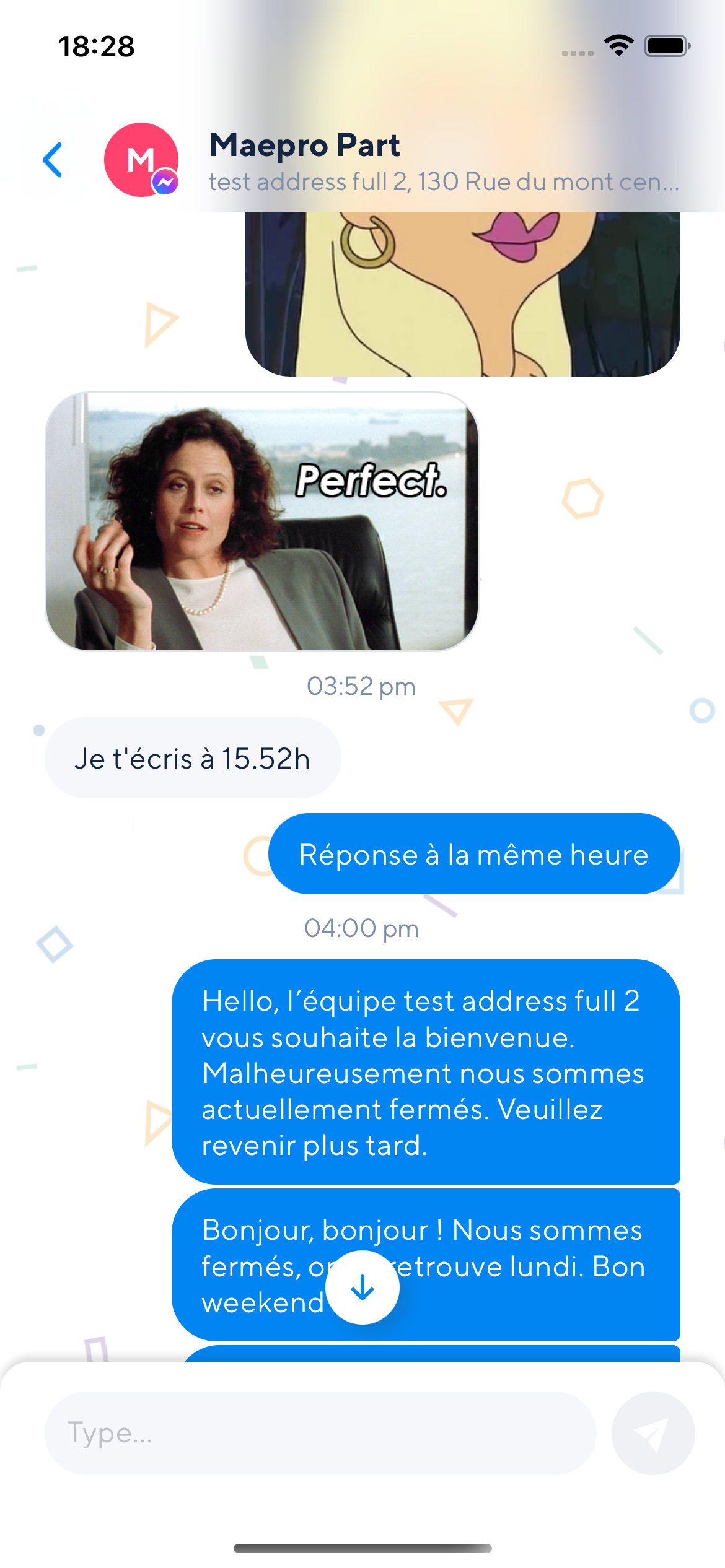rn-id-blurview
A component for UIVisualEffectView's blur effect on iOS, and BlurView on Android.
Content
Installation
- Install the library using either Yarn:
yarn add rn-id-blurview
or npm:
npm install --save rn-id-blurview
- Link your native dependencies:
react-native link rn-id-blurview
- (iOS only) Install to Xcode:
cd ios
pod install
- (Android only, optional)
If you've defined project-wide properties (recommended) in your root
build.gradle, this library will detect the presence of the following properties:
buildscript {...}
allprojects {...}
/**
+ Project-wide Gradle configuration properties
*/
ext {
compileSdkVersion = 27
targetSdkVersion = 27
buildToolsVersion = "27.0.3"
}- Include the library in your code:
import { BlurView } from "rn-id-blurview";- Compile and have fun!
BlurView
Properties:
-
blurType(String)-
xlight- extra light blur type -
light- light blur type -
dark- dark blur type -
extraDark- extra dark blur type (tvOS only) -
regular- regular blur type (iOS 10+ and tvOS only) -
prominent- prominent blur type (iOS 10+ and tvOS only) - iOS 13 only Blur types:
-
chromeMaterial- An adaptable blur effect that creates the appearance of the system chrome. -
material- An adaptable blur effect that creates the appearance of a material with normal thickness. -
thickMaterial- An adaptable blur effect that creates the appearance of a material that is thicker than normal. -
thinMaterial- An adaptable blur effect that creates the appearance of an ultra-thin material. -
ultraThinMaterial- An adaptable blur effect that creates the appearance of an ultra-thin material. -
chromeMaterialDark- A blur effect that creates the appearance of an ultra-thin material and is always dark. -
materialDark- A blur effect that creates the appearance of a thin material and is always dark. -
thickMaterialDark- A blur effect that creates the appearance of a material with normal thickness and is always dark. -
thinMaterialDark- A blur effect that creates the appearance of a material that is thicker than normal and is always dark. -
ultraThinMaterialDark- A blur effect that creates the appearance of the system chrome and is always dark. -
chromeMaterialLight- An adaptable blur effect that creates the appearance of the system chrome. -
materialLight- An adaptable blur effect that creates the appearance of a material with normal thickness. -
thickMaterialLight- An adaptable blur effect that creates the appearance of a material that is thicker than normal. -
thinMaterialLight- An adaptable blur effect that creates the appearance of a thin material. -
ultraThinMaterialLight- An adaptable blur effect that creates the appearance of an ultra-thin material.
-
-
-
blurAmount(Default: 10, Number)-
0-100- Adjusts blur intensity
-
-
reducedTransparencyFallbackColor(Color) (iOS only)-
black, white, #rrggbb, etc- background color to use if accessibility setting ReduceTransparency is enabled
-
Note: The maximum
blurAmounton Android is 32, so higher values will be clamped to 32.
Complete usage example that works on iOS and Android:
import React, { Component } from "react";
import { View, Image, Text, StyleSheet } from "react-native";
import { BlurView } from "rn-id-blurview";
export default class Menu extends Component {
render() {
return (
<View style={styles.container}>
<Image
key={'blurryImage'}
source={{ uri }}
style={styles.absolute}
/>
<Text style={styles.absolute}>Hi, I am some blurred text</Text>
{/* in terms of positioning and zIndex-ing everything before the BlurView will be blurred */}
<BlurView
style={styles.absolute}
viewRef={this.state.viewRef}
blurType="light"
blurAmount={10}
reducedTransparencyFallbackColor="white"
/>
<Text>I'm the non blurred text because I got rendered on top of the BlurView</Text>
</View>
);
}
}
const styles = StyleSheet.create({
container: {
justifyContent: "center",
alignItems: "center"
},
absolute: {
position: "absolute",
top: 0,
left: 0,
bottom: 0,
right: 0
}
});In this example, the Image component will be blurred, because the BlurView in positioned on top. But the Text will stay unblurred.
If the accessibility setting Reduce Transparency is enabled the BlurView will use reducedTransparencyFallbackColor as it's background color rather than blurring. If no reducedTransparencyFallbackColor is provided, theBlurViewwill use the default fallback color (white, black, or grey depending on blurType)
Android
Android uses the BlurView.
If you only need to support iOS, then you can safely ignore these limitations.
In addition to blurType and blurAmount, Android has some extra props that can be used to override the default behavior (or configure Android-specific behavior):
-
blurRadius(Number - between 0 and 25) - Manually adjust the blur radius. (Default: matches iOS blurAmount) -
downsampleFactor(Number - between 0 and 25) - Scales down the image before blurring (Default: matches iOS blurAmount) -
overlayColor(Color) - Set a custom overlay color (Default color based on iOS blurType)
Workaround for android
<View style={{backgroundColor: preferedColorForAndroidONParent}}>
<BlurView
blurType="light"
blurAmount={15}
style={StyleSheet.absoluteFill}
key={isIOS ? 'blur' : Math.random().toString()}
overlayColor={Platform.select({ android: Color.Transparent, ios: Color.White70 })}
/>
</View>Troubleshooting
On older instances of react-native, BlurView package does not get added into the MainActivity/MainApplication classes where you would see Warning: Native component for 'BlurView' does not exist in RN YellowBox or console.
To rectify this, you can add the BlurViewPackage manually in MainActivity/MainApplication classes
...
import com.cmcewen.blurview.BlurViewPackage;
...
public class MainApplication extends Application implements ReactApplication {
...
@Override
protected List<ReactPackage> getPackages() {
return Arrays.<ReactPackage>asList(
new MainReactPackage(),
new BlurViewPackage()
);
}
...
}Questions?
Feel free to contact me on linkedin or create an issue

